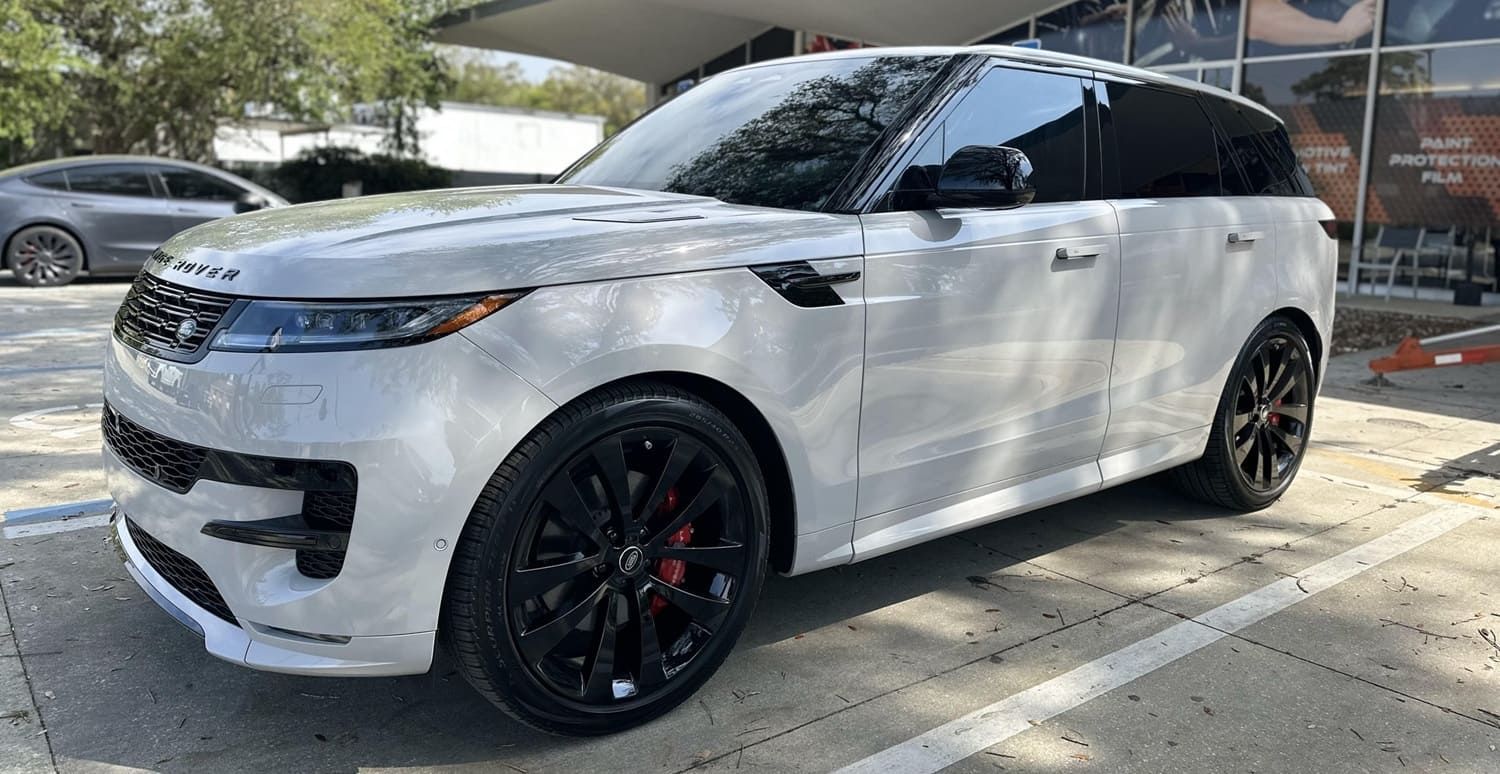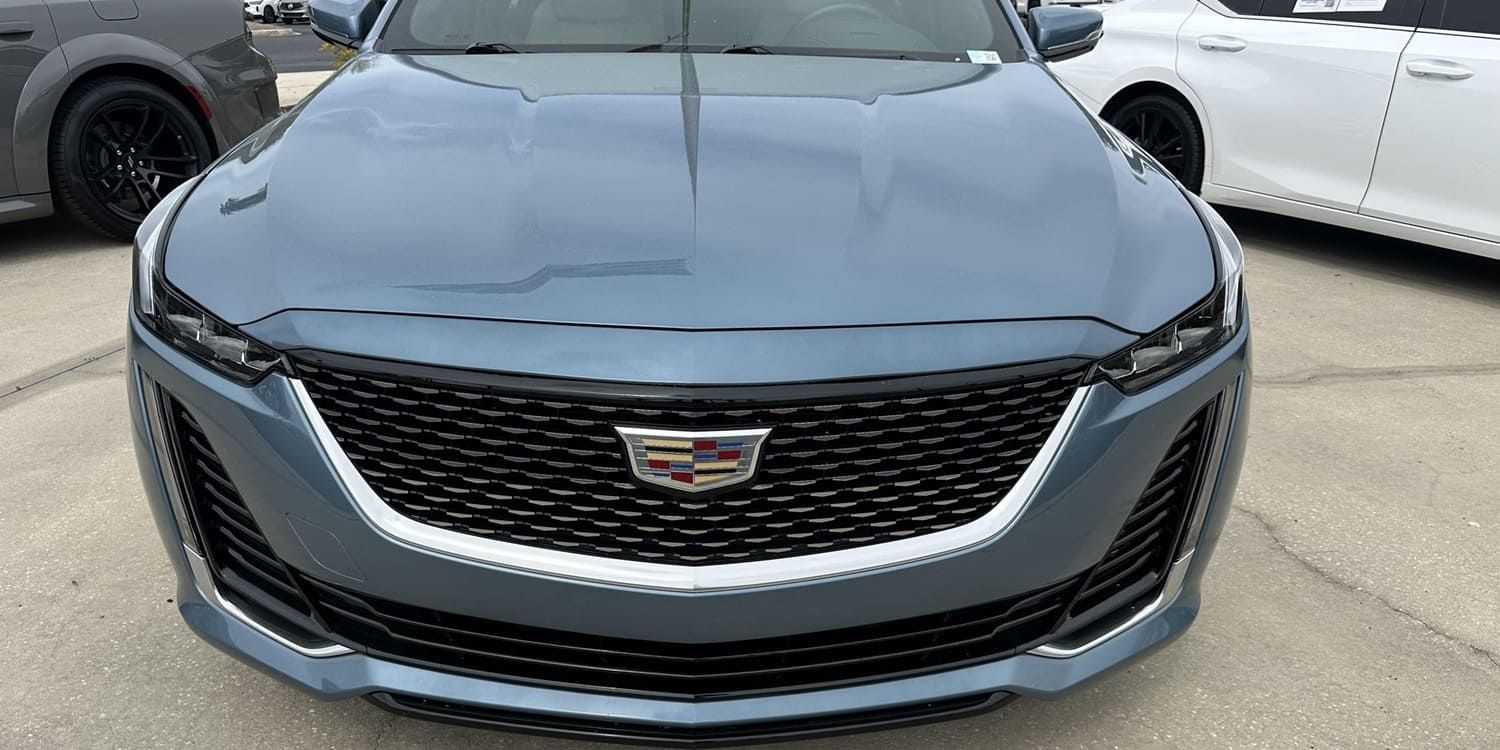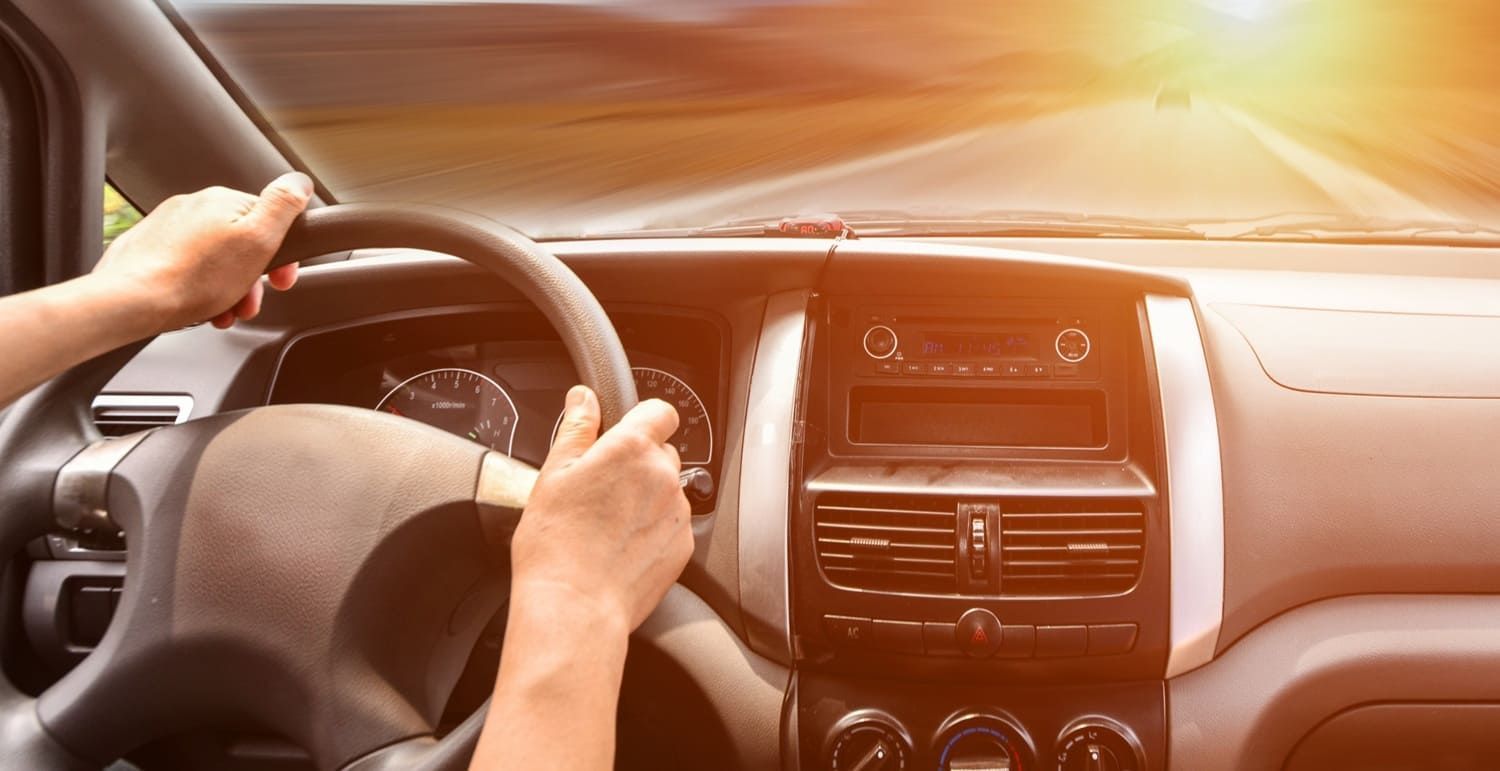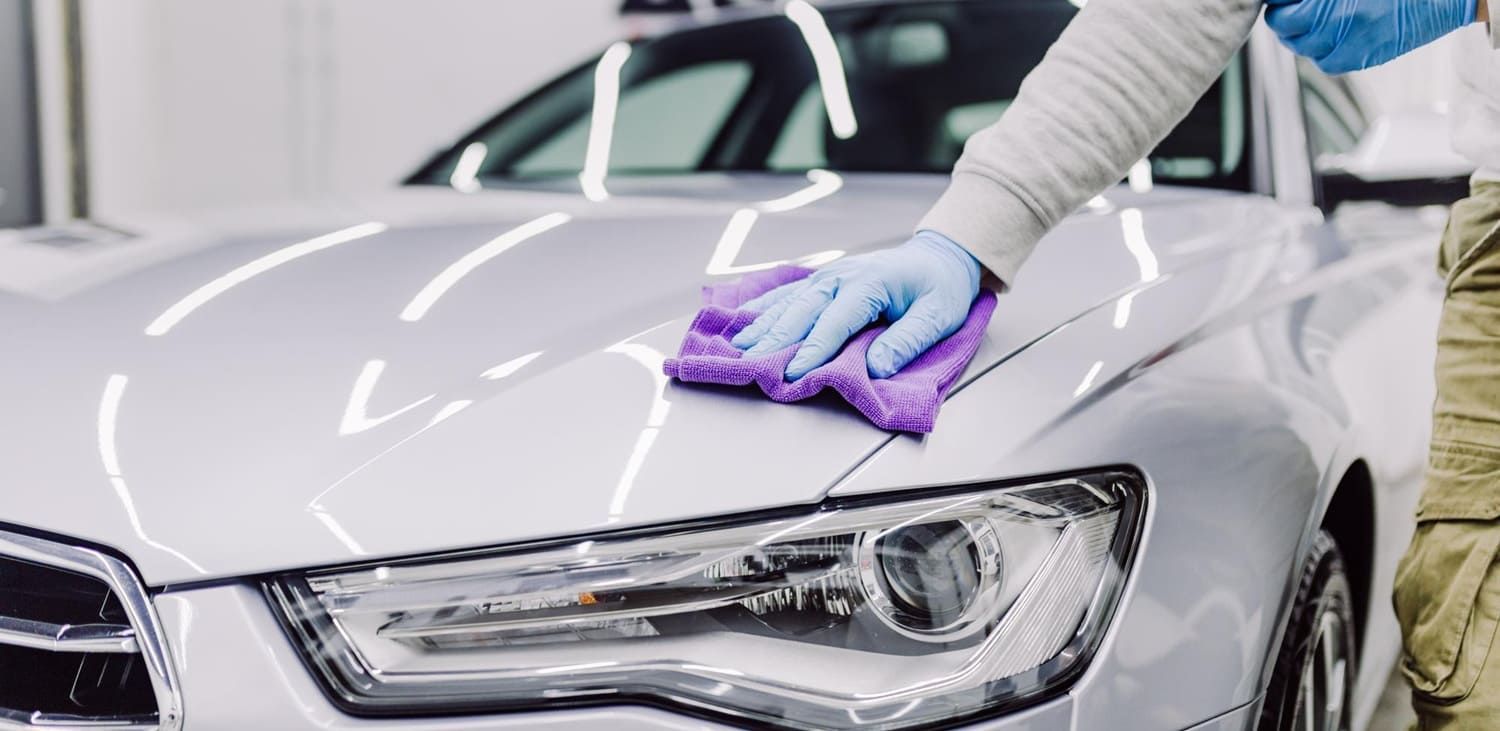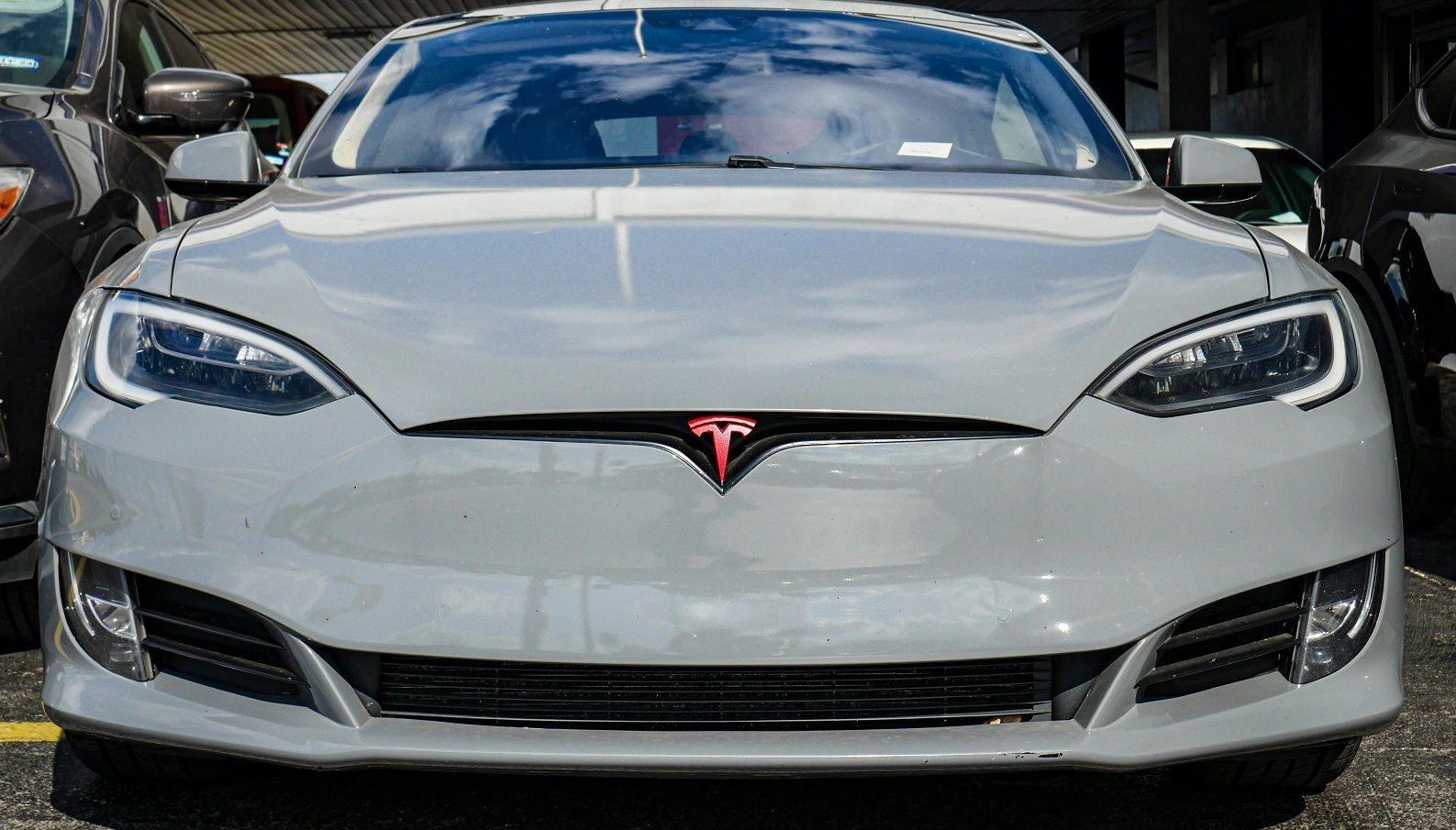Jacksonville Location
Solar Shade Window Tint
6410 Beach Blvd
Jacksonville, FL 32216
(904) 654-2173
Business Hours:
Monday - Friday: 9am to 5pm
Saturday: 9am to 5pm
Sunday: Closed
Lake City Location
Solar Shade Window Tint
144 SW Waterford Ct Suite 101
Lake City, FL 32025
(386) 628-2658
Business Hours:
Monday - Friday: 9am to 5pm
Saturday: Closed
Sunday: Closed
What Happens If Ceramic Window Tint Is Applied Incorrectly?
Ceramic window tint is a popular choice among vehicle owners. It's known for its durability and superior heat rejection properties.
However, like any product, it's not immune to issues. Especially when not applied correctly.
Common ceramic window tint issues can range from bubbling and peeling to cracking. These problems often stem from improper application techniques or substandard materials.
In this article, we delve into what happens when ceramic window tint is applied incorrectly. We'll explore the most common issues, their causes, and how to address them.
Whether you're considering ceramic window tint for your vehicle or have recently had it installed, this guide is for you. It's also a valuable resource for automotive enthusiasts and professionals in the window tinting industry.
So, let's dive in and learn how to ensure the longevity and performance of your ceramic window tint.
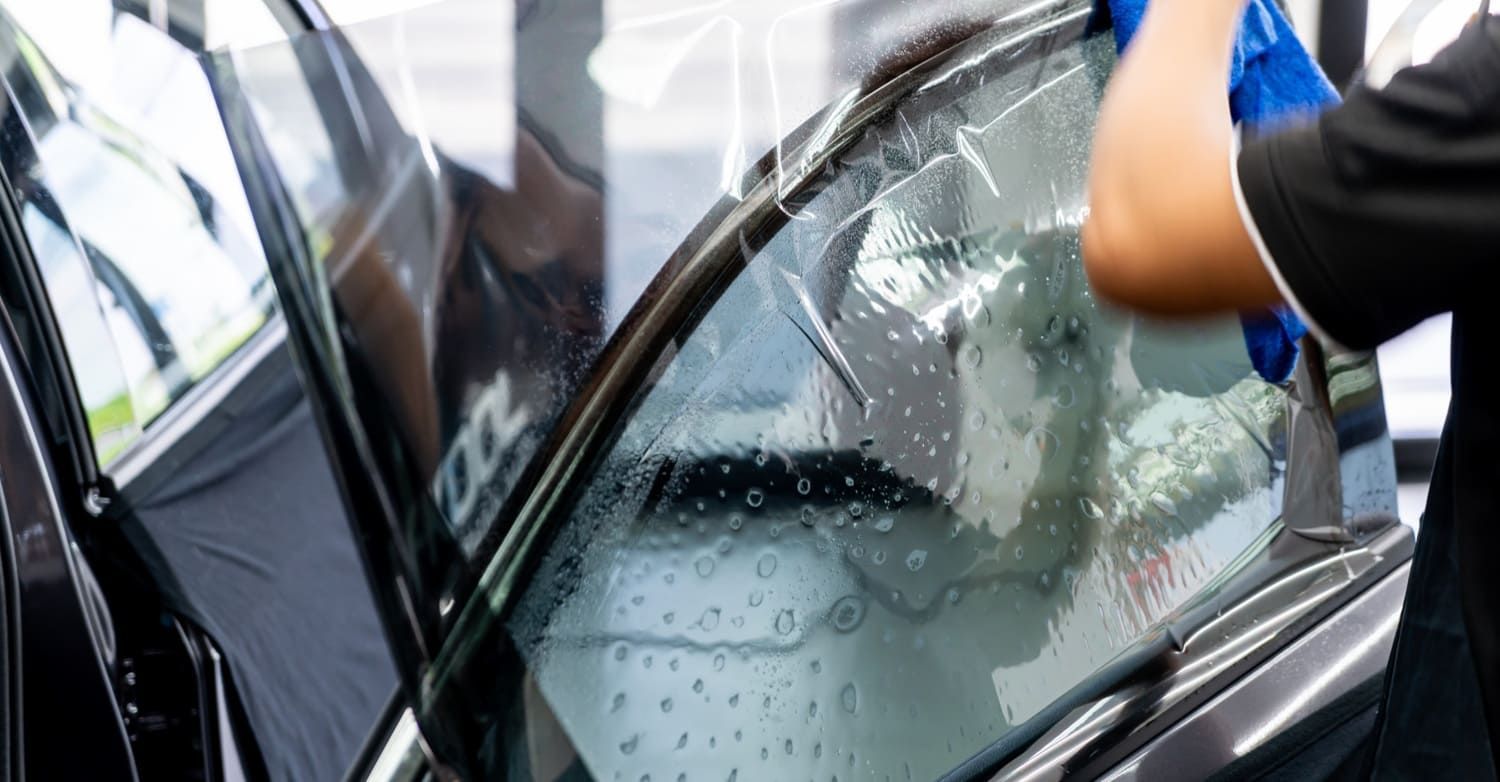
Understanding Ceramic Window Tint and Its Benefits
Ceramic window tint is more than just a dark film for windows. It's a technological advancement in the world of window tints, praised for its exceptional qualities.
The unique composition of ceramic tint involves non-metallic, nano-ceramic particles. These tiny particles effectively block solar heat while maintaining transparency.
Unlike traditional tints, ceramic tints do not interfere with electronic signals. You won't face issues with GPS or mobile phones, ensuring your connectivity stays uninterrupted.
Here are key benefits of ceramic window tint:
- Superior heat rejection without reducing visibility.
- High UV protection to shield interiors from sun damage.
- Less glare compared to metalized or dyed tints.
- Resistance to fading or discoloration over time.
These qualities make it a top choice for those seeking performance and longevity. It's ideal for those living in hot climates or wishing to preserve the interior look of their vehicles.
However, to reap these benefits, professional installation is crucial. Proper application ensures the film functions as intended, without premature wear or damage. Understanding these advantages highlights why ceramic tints are worth considering for your next tinting project.
Most Common Ceramic Window Tint Issues
While ceramic window tints offer numerous benefits, improper installation can lead to various issues. Understanding these common problems can save time and money.
Bubbling is a frequent concern, often due to air or moisture trapped during installation. This can cause unsightly air pockets in the film.
Peeling usually results from poor adhesion. Contaminated surfaces or low-quality adhesive often contribute to this problem.
Cracking is another potential issue, frequently arising from exposure to extreme temperature changes. Poor quality film can exacerbate this problem.
Discoloration and fading occur when the tint is exposed to UV rays or if the film is substandard. Over time, this affects its appearance and performance.
Some common ceramic window tint issues include:
- Bubbling or peeling due to poor installation methods.
- Cracking caused by temperature fluctuations or low-quality film.
- Discoloration from UV exposure.
- Hazy or blurry film from improper surface cleaning.
- Small particles trapped under the film.
- Edge gaps or light leaks due to miscalculations.
- Unwanted signals interference if components are not properly managed.
A hazy or blurry appearance can result from inadequate cleaning prior to application. Dirt and debris compromise the film's clarity.
Particulate contamination can occur if the work environment is not clean. This results in visible 'trash' under the tint surface.
Edge gaps and light leaks often stem from inaccurate cutting or measurement of the film. This affects the overall fit and finish.
In some cases, incorrect installation may also reduce visibility, particularly at night. This can pose safety concerns for drivers.
Understanding these issues prepares consumers for what to watch out for. Addressing them early prevents further complications and increases the lifespan of the tint.
Bubbling and Peeling: Causes and Solutions
Bubbling in ceramic window tint is typically caused by air or moisture trapped beneath the film. Improper application techniques often result in these unsightly bubbles.
To fix bubbling, professional reinstallation is often necessary. Ensuring a dust-free environment and proper squeegee usage can prevent it in the first place.
Peeling is generally due to weak adhesion between the film and the glass. Contaminants like dust or oil on the window surface often cause this failure.
Using a high-quality adhesive ensures better adherence. The glass must be thoroughly cleaned before the film is applied.
When peeling occurs, it may be necessary to replace the affected section. Engaging professionals can help ensure lasting results and prevent recurrence of the issue.
Cracking and Fading: Preventing Long-Term Damage
Cracking in ceramic window tint commonly results from continuous exposure to extreme temperatures. The expansion and contraction stress the film.
Choosing premium quality film with strong endurance against thermal changes is crucial. Such films are less likely to crack over time.
Fading and discoloration often indicate long-term UV exposure or subpar film quality. Lower grade films may lose their color sooner than expected.
To mitigate this, select films with superior UV resistance properties. Keeping the vehicle in shaded areas also prolongs the film's color integrity.
Long-term damage can be managed by regular inspections. Early detection of damage allows for timely intervention before the issues become severe.
Installation Errors: Misalignment and Edge Gaps
Misalignment during installation is a common error that significantly affects the tint’s appearance. Uneven application can detract from the seamless look intended with window films.
Edge gaps are often caused by inaccurate cutting or film mismeasurement. These gaps allow sunlight to infiltrate, reducing the efficacy of the tint.
Ensure accurate measurements are taken to minimize edge gaps. Proper training and precision tools are essential in achieving a perfect fit.
Light leaks can compromise the overall functionality of the tint. Addressing these issues promptly through professional adjustment can help maintain the intended performance of the tint.
Misalignment and edge gaps lead to dissatisfaction. Professional installers use proven techniques to ensure clean, precise application. This helps avoid such errors and maximize the benefits of ceramic window tints.
The Impact of Environmental Factors on Ceramic Tint
Environmental factors significantly influence the performance and longevity of ceramic window tint. Sunlight is a primary concern, as excessive UV exposure can degrade tint quality over time.
Extreme temperatures also affect window tints. Rapid temperature fluctuations can cause the film to expand and contract, leading to potential cracks.
Humidity levels play a role too. High moisture can interfere with the adhesive’s ability to bond securely to the glass, leading to peeling or bubbling.
Dust and pollutants in the air during application can embed under the tint. This results in a poor finish and may necessitate replacement sooner than expected.
Legal and Safety Considerations for Ceramic Tint
Ceramic window tint offers numerous benefits but must comply with local tinting laws. Different regions have regulations concerning the allowed darkness levels and reflective properties.
Ignoring tint laws can result in fines and mandatory removal of the film. Therefore, familiarizing yourself with these legal requirements before installation is crucial.
Safety concerns also arise if ceramic tints are improperly applied. For instance, overly dark tints can impair visibility, posing a risk during nighttime driving.
It’s essential to ensure the tint does not interfere with electronic signals. A poor choice can impede GPS and mobile connectivity, affecting safety and communication on the road.
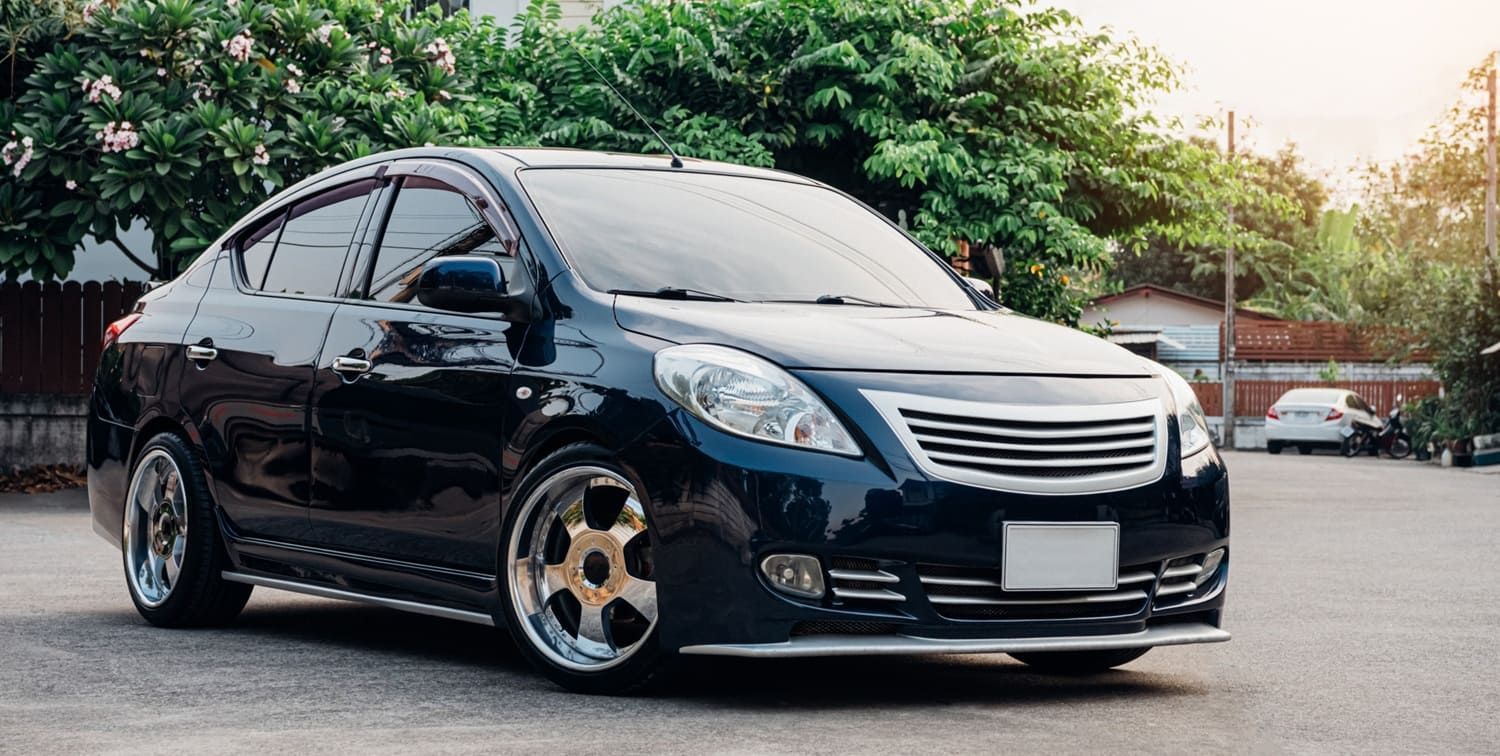
DIY vs. Professional Installation: Weighing the Options
Opting for a DIY ceramic window tint installation can be tempting due to the perceived cost savings. However, the process requires precision and skill to avoid common errors. Mishaps during a DIY installation can lead to bubbling, peeling, or misalignment, which can be costly to fix.
Professional installation ensures the job is done right the first time. Trained technicians possess the experience and tools necessary for a flawless application. They are more adept at handling tint film, cutting it precisely, and ensuring no air bubbles or dust are trapped underneath.
Although professional installation may have a higher upfront cost, it often saves money in the long run. Correct installation reduces the likelihood of needing repairs or a complete redo. Moreover, many professional services offer warranties, providing peace of mind and added value.
Choosing a professional installer also includes expertise on the latest products and techniques. With their guidance, you can select the best quality ceramic tint that aligns with your needs and complies with legal requirements.
How to Choose the Right Ceramic Window Tint Service
Selecting the right ceramic window tint service is crucial for a successful installation. Begin by researching and reading reviews online to gauge customer satisfaction. Look for services with a solid track record and positive testimonials.
Ask potential providers about their experience with ceramic window tints specifically. Expertise in handling this type of film is essential due to its unique properties. Verify if the service is certified or affiliated with recognized industry bodies.
Request a detailed quotation to compare prices and services offered by different providers. Make sure to inquire about warranties and aftercare options, which can be important for long-term satisfaction. Also, check if they comply with local tinting regulations to avoid any legal hassles.
Visit the service center, if possible, to observe their working environment. A clean, organized setup often indicates professionalism and attention to detail, factors critical for a quality installation.
Maintenance Tips to Avoid Ceramic Window Tint Issues
Maintaining your ceramic window tint is key to avoiding common problems. Start by using soft, non-abrasive cloths for cleaning. This helps prevent scratches that can lead to more severe issues.
Stay clear of ammonia-based cleaners, as they can damage the tint film. Opt for specialized tint-safe products instead. These cleaners will ensure your tint stays in top condition.
Regularly inspect the tint for signs of bubbling or peeling. Early detection can prevent minor issues from escalating. Addressing problems quickly is often the best strategy.
Finally, park your vehicle in shaded areas when possible. Limiting sun exposure can reduce the risk of fading and discoloration over time, preserving your tint's aesthetic and functional qualities.
Addressing Ceramic Window Tint Issues: Steps to Take
If your ceramic window tint shows flaws, act promptly to address them. Ignoring issues can lead to worsening problems and potentially costly fixes. Early intervention is crucial.
Begin by identifying the specific issue, such as bubbling or peeling. This helps in determining the appropriate remedy. Knowing the cause aids in selecting the correct solution.
Consult with a professional installer if the problem persists. Expert advice can prevent further damage and help maintain the tint’s integrity. Professional assistance ensures comprehensive resolution.
In some cases, removing and reapplying the tint may be necessary. This step should be left to professionals to guarantee a flawless reinstallation. A skilled approach can restore the tint to its optimal state.
Conclusion: Ensuring Longevity and Performance of Ceramic Tint
Proper installation and maintenance are key for ceramic window tint longevity. At Solar Shade Window Tint in Jacksonville, FL; Lake City, FL; & Savannah, GA, we ensure your ceramic window tints are installed using high-quality materials and professional services to prevent issues and extend the life of your tint.
Stay vigilant for any signs of damage with the help of our expert team. Early detection and intervention by Solar Shade Window Tint ensure your tint continues to function well, protecting your vehicle efficiently and maintaining its appearance and performance.
Contact us today for a free estimate and let Solar Shade Window Tint provide you with top-tier ceramic window tinting solutions that enhance your vehicle’s comfort, protection, and style.
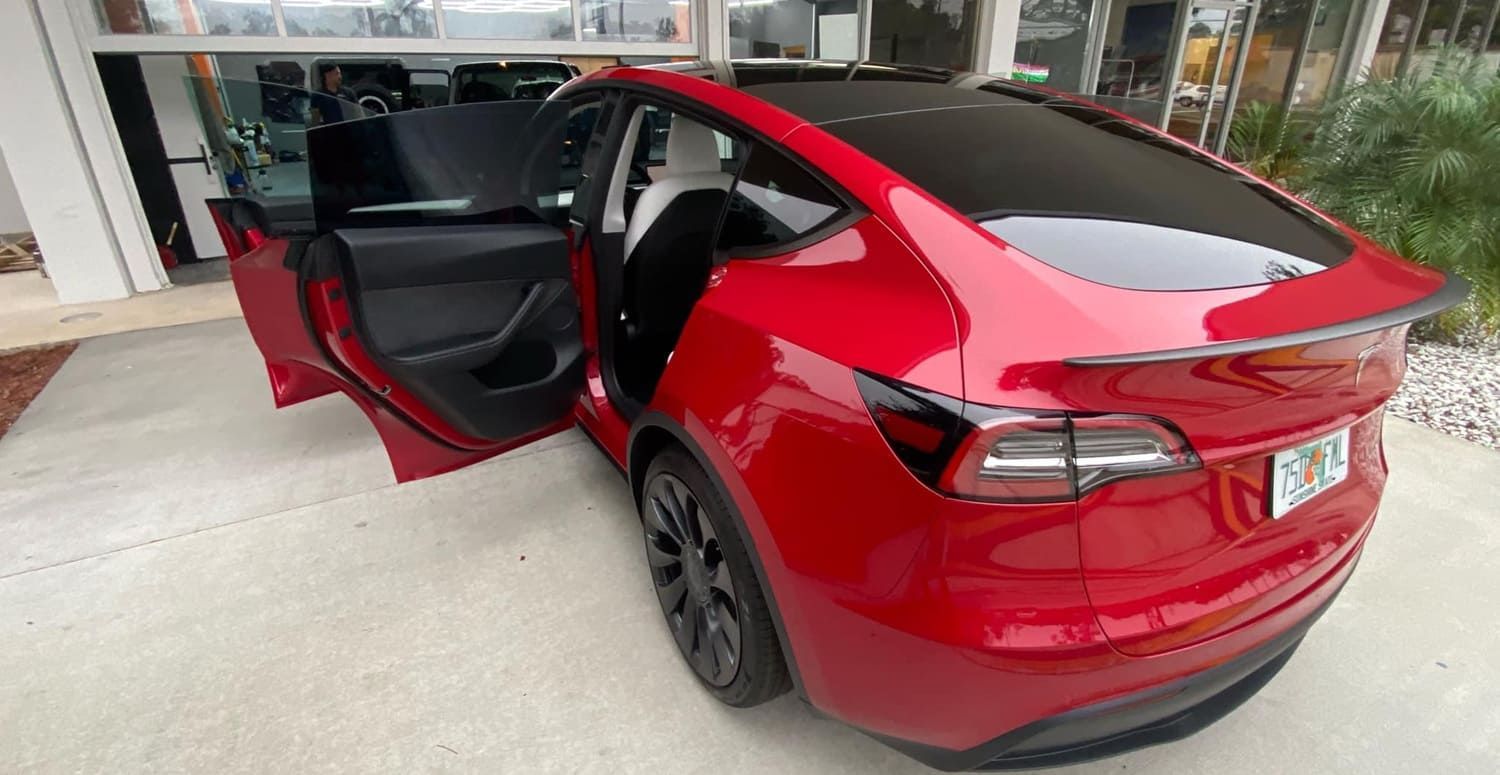
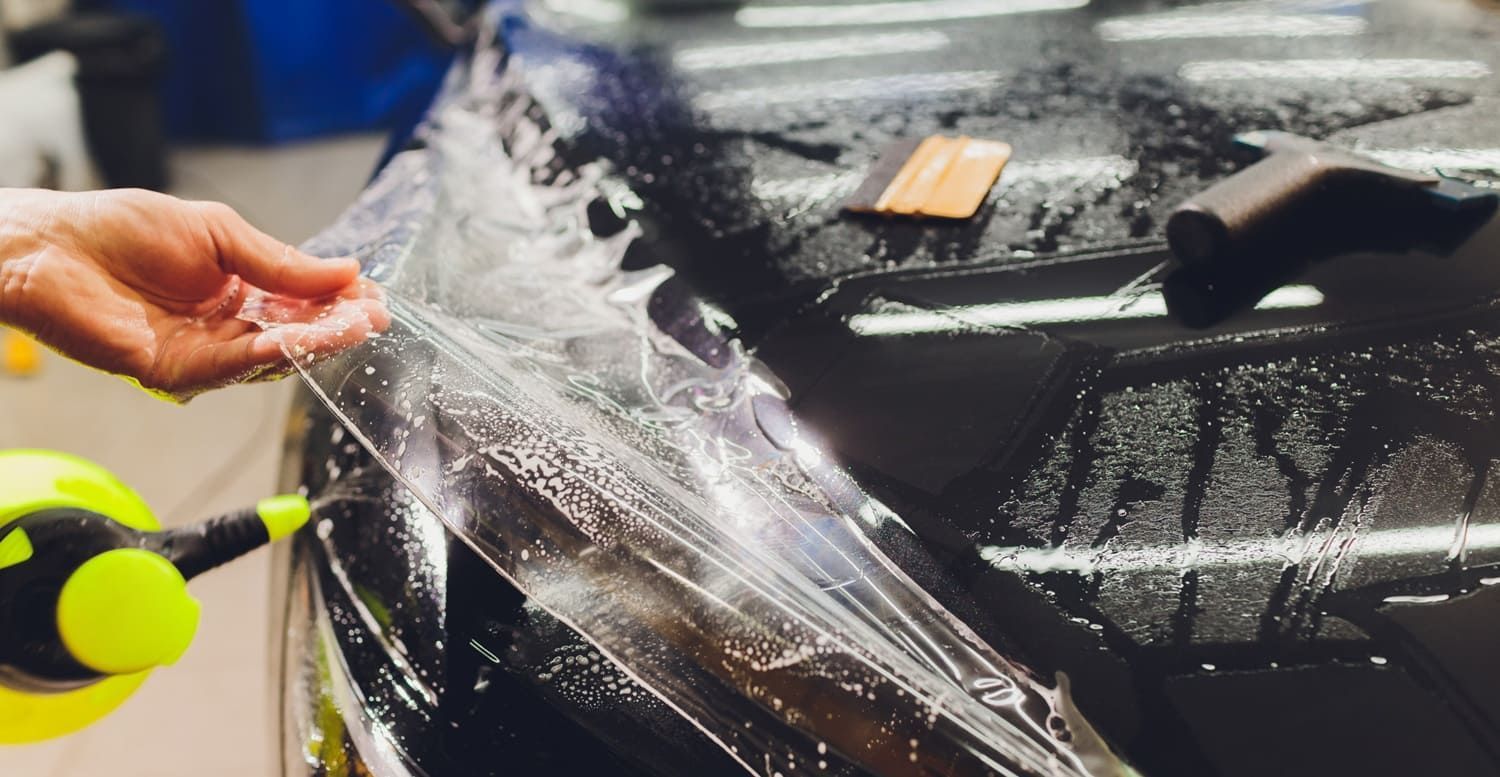
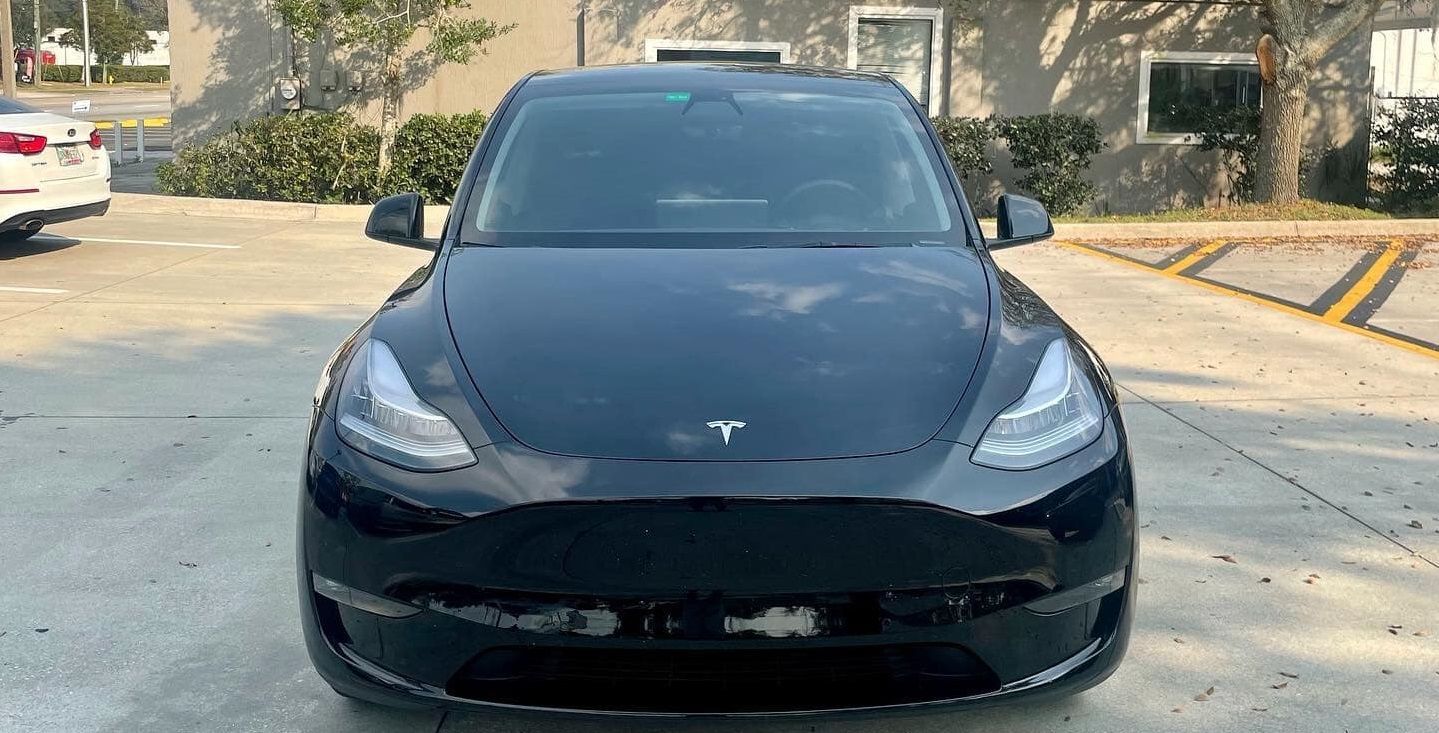
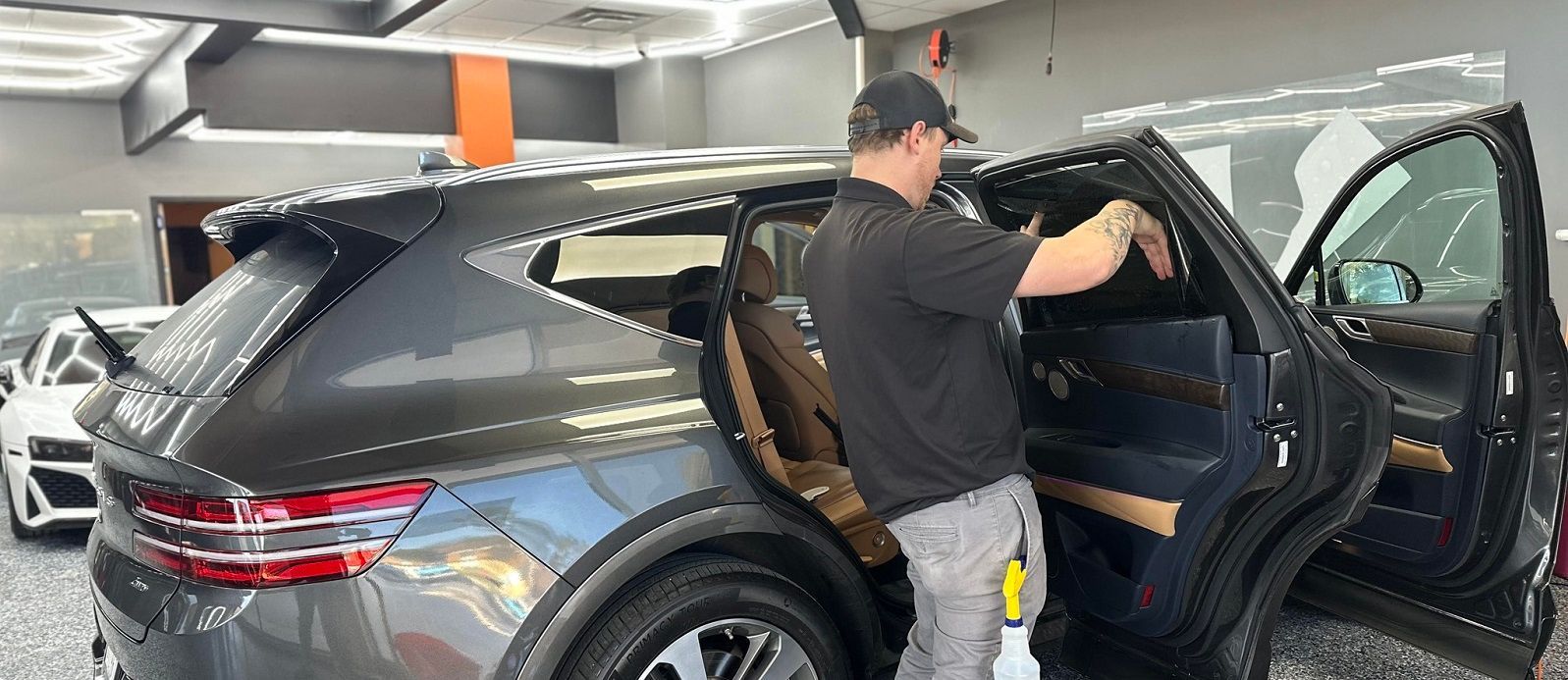

Jacksonville, FL
Jacksonville, FL 32216
(904) 654-2173
Business Hours:
Monday - Friday: 9am to 5pm
Saturday: 9am to 5pm
Sunday: Closed
Lake City, FL
144 SW Waterford Ct Suite 101
Lake City, FL 32025
(386) 628-2658
Business Hours:
Monday - Friday: 9am to 5pm
Saturday: Closed
Sunday: Closed
Savannah, GA
Savannah, GA 31408
(912) 724-9736
Business Hours:
Monday - Friday: 9am to 5pm
Saturday: Closed
Sunday: Closed
All Rights Reserved | Solar Shade Window Tint


